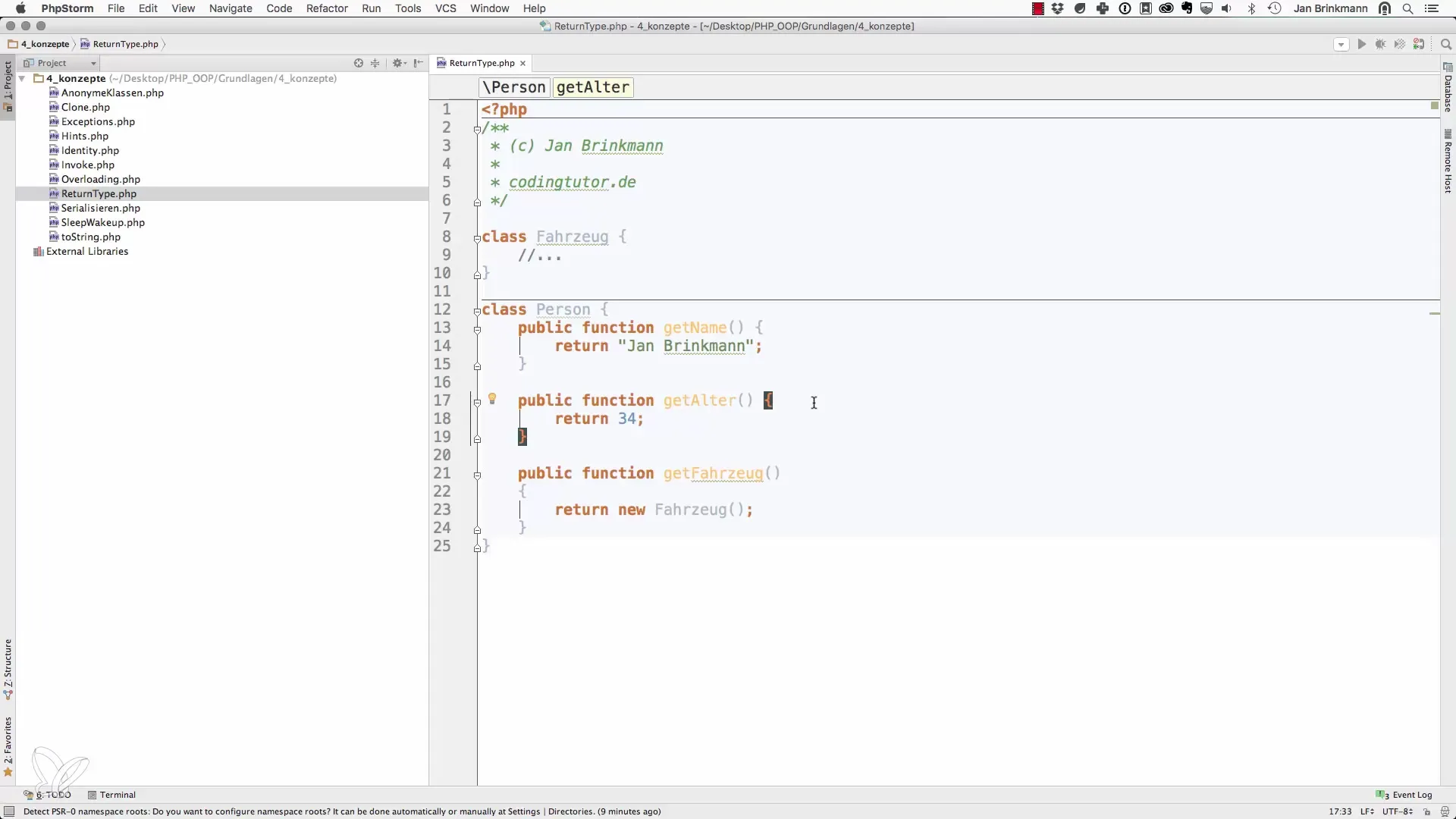The declaration of return values in PHP 7 is crucial for clean and maintainable programming. Understanding which data is returned by methods greatly contributes to the readability and predictability of code. In this guide, we will focus on the new possibility in PHP 7 to declare return types for methods and explain the syntax as well as the advantages of this functionality.
Key Insights
- PHP 7 allows the declaration of return values for methods.
- It is possible to define types like string, int, and array as return values.
- The declaration of return types improves the readability and predictability of the code.
Step-by-Step Guide
Step 1: Create an Example Class
To demonstrate return values in PHP 7, we consider an example class called "Person." This class could be used to represent personal data. To start, define the basic properties of this class, including name, age, and vehicle.

In PHP 7, you can now also clearly declare the return values for the methods, which becomes particularly useful when you're unsure what type of data is returned.
Step 2: Define Methods with Return Values
Start by defining the method getName(). This method is intended to return the name of the person stored in the class.
This example clarifies that the method getName() returns a string. This is helpful in avoiding future errors.
Step 3: Add Additional Return Values
Continue by defining the method to return the age.
Adding this type declaration ensures that you align the expectation and reality of your methods and helps you better understand the code.
Step 4: Use Arrays as Return Values
Now we will extend the example class by adding another example: a method that returns a lottery tip as an array.
Here, we use the return type declaration array to clarify that the method returns an array, which is important to understand the structure of the returned data.
Step 5: Apply Return Values in Practice
Now, when you use the methods in your application, you benefit from a clear expectation of what is returned. Create an instance of your class in a script to test the return values directly. This gives you immediate feedback on any type errors.
Summary - Object-Oriented Web Programming with PHP: Understanding Return Values of Methods
The ability to declare return values in PHP 7 brings fresh air to object-oriented programming. You gain a tool that improves the readability of your code and increases the predictability of methods. By deciding on return types for your methods, you provide both your code and yourself with clearer guidance on what is expected at which point.
Frequently Asked Questions
How do I declare return types for methods?You can declare return types by specifying the type with a colon after the parameter list declaration.
Are return types mandatory?No, they are not mandatory, but highly recommended for code quality and readability.
What happens if the return type is not adhered to?PHP will throw an error if the method returns a different type than the declared return value.


